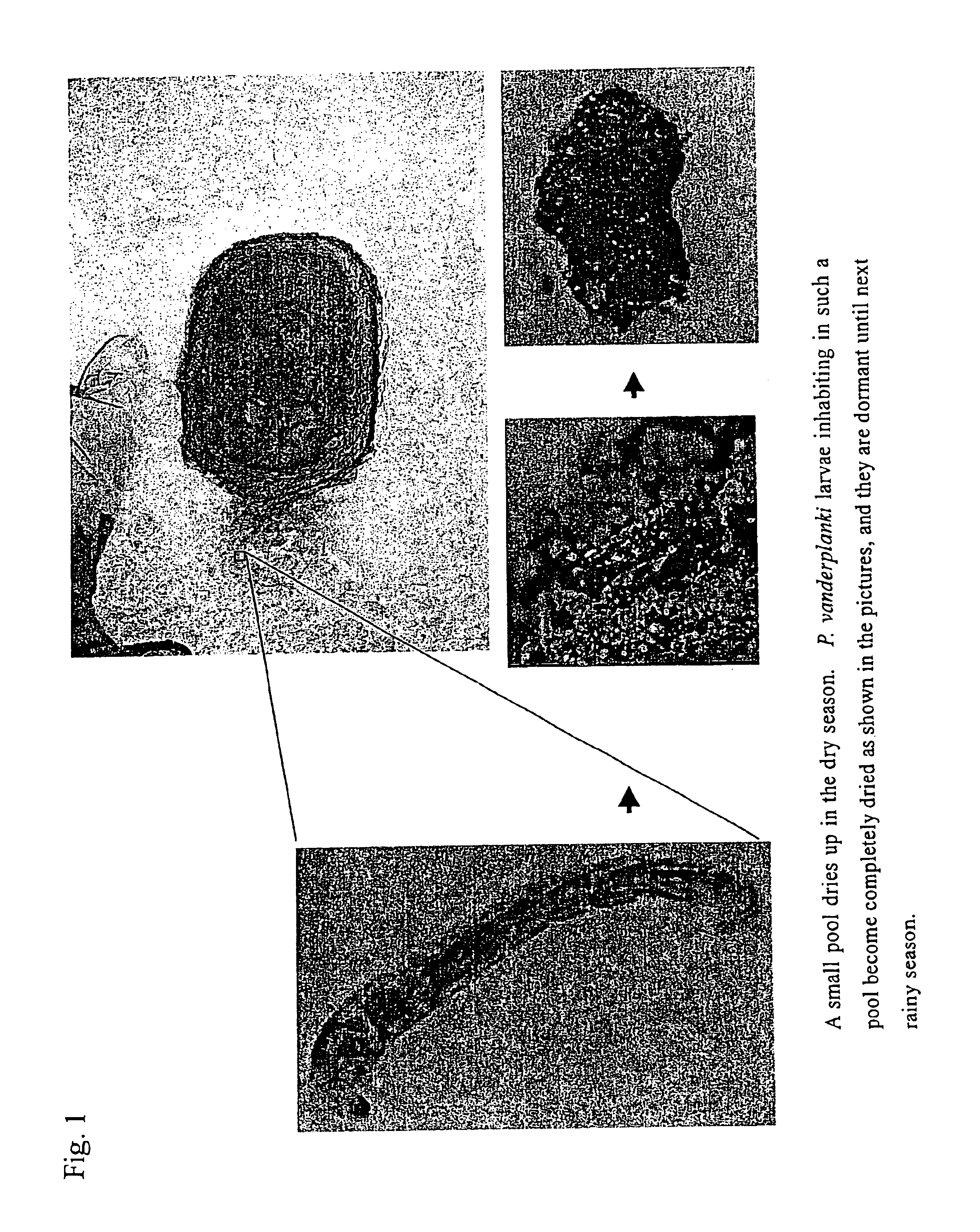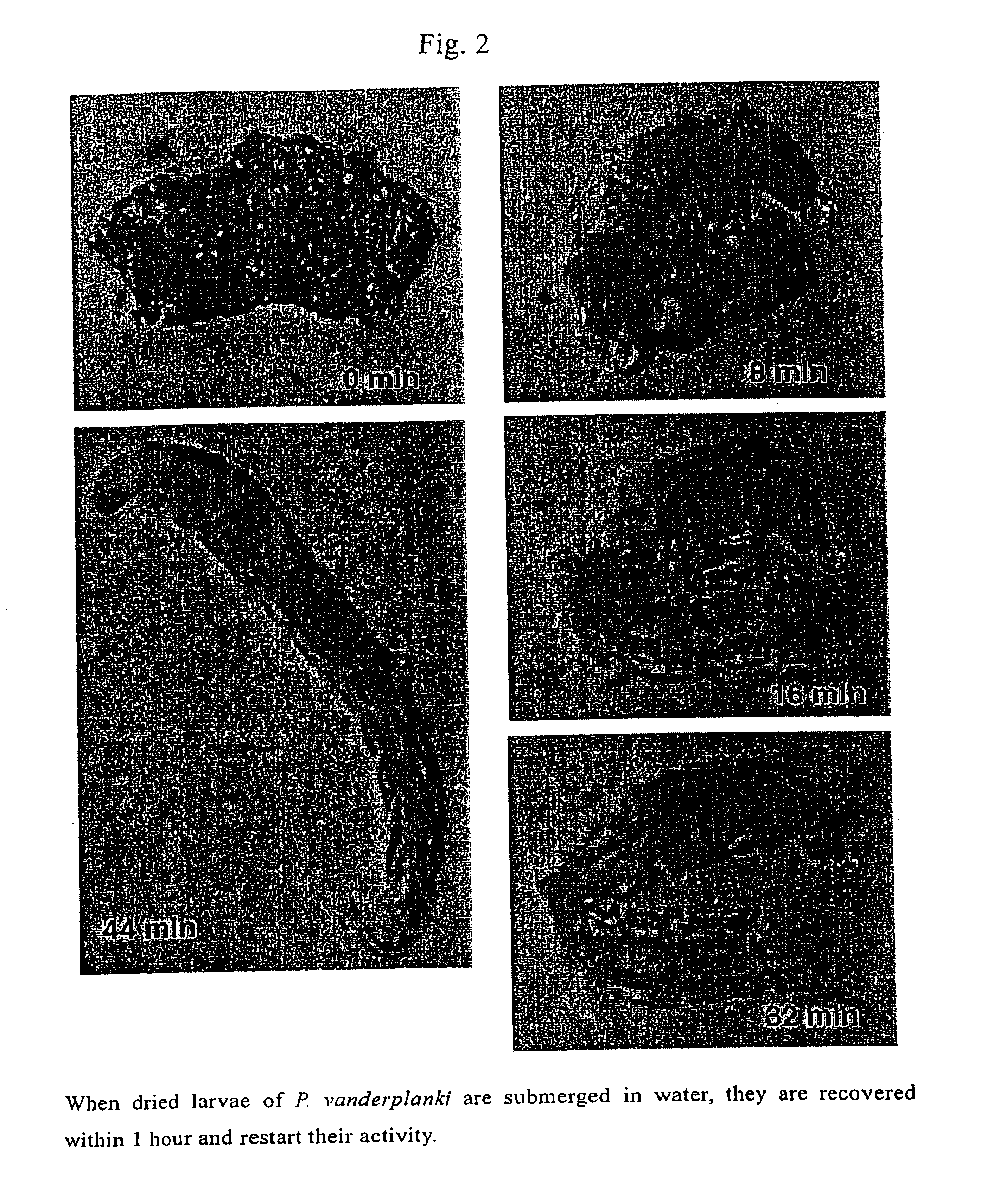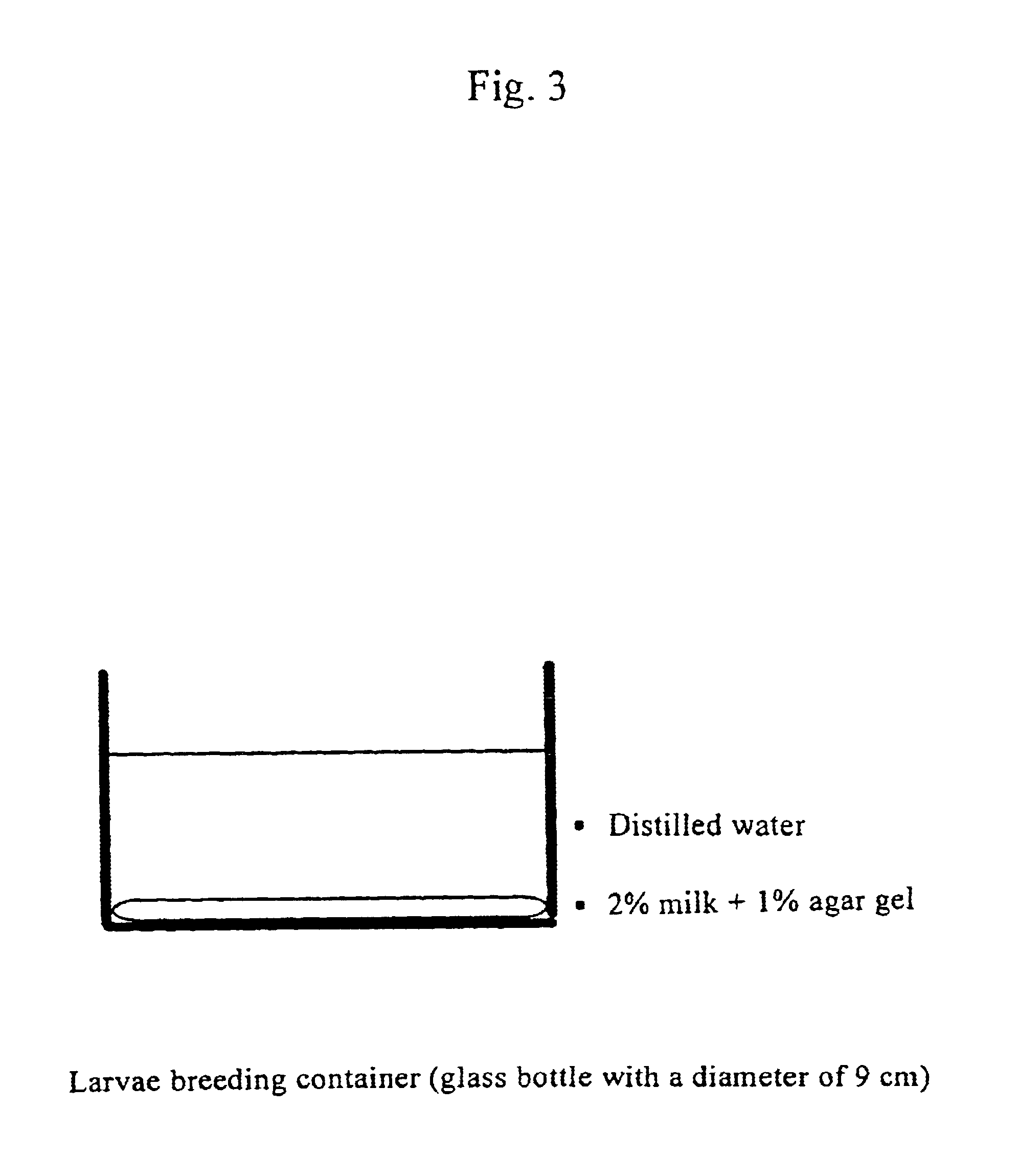Method for dry-preserving multicellular organism tissue at ordinary temperatures
a multicellular organism and ordinary temperature technology, applied in the direction of microorganisms, anhydride/acid/halide active ingredients, biocide, etc., can solve the problems of remarkably low survival rate of cells, environmental pollution, and accumulation of trehalose, etc., to achieve dry resistance of cells. not sufficient, necessary condition,
- Summary
- Abstract
- Description
- Claims
- Application Information
AI Technical Summary
Benefits of technology
Problems solved by technology
Method used
Image
Examples
experimental example 2
Conditions for Inducing Anhydrobiosis of Larvae
[0043]To determine the conditions for inducting anhydrobiosis of P. vanderplanki individuals in the laboratory, the present inventors have conducted the following experiments.
1. 440 μl of distilled water and a filter paper in a drying container (glass petri dish with a diameter of 6 cm) were arranged as shown in FIG. 5.
2. 10 larvae of P. vanderplanki were placed in each drying container.
[0044]3. The drying containers were placed in a desiccator at humidity of 5% or less to evaporate the distilled water from the glass petri dish at a rate of about 220 to 230 μl / day.
4. Consequently, the larvae were completely dehydrated over the course of 2 days while preserving a recoverable state, resulting in anhydrobiosis. Their survival rate was about 80% (FIG. 6).
[0045]It should be noted that when larvae were put in 1 ml of distilled water and dried over the course of 24 hours, the dried larvae were not recovered.
[0046]Further, the inventors found t...
experimental example 3
Analytical Results of Endocrine Control Mechanism for Trehalose Synthesis Induction (see FIG. 7)
[0048]The present inventors have proved that the trehalose synthesis is induced without the mediation of the central nervous system by the following method.
1. Larvae were ligated between the head and thorax with threads and decapitated. These decerebrated larvae could thereafter survive for a few weeks because P. vanderplanki is an insect having an open circulatory system.
[0049]2. The decerebrated larvae were brought into anhydrobiosis under a rapid drying condition. They were placed in a desiccator for a period of 1 week to 10 days. After it was confirmed that the larvae were completely dried, they were submerged in water (rehydrated). 95% of the decerebrated and dried larvae were recovered.
3. Conventionally, it has been considered that the preparation for the cryptobiosis of insects is advanced through a complex mechanism with the mediation of the central nervous system (Technical liter...
examples
[0052]Based on the findings of the above experimental examples, the conditions for drying extirpated tissues (medium composition or dehydration speed, for example) were determined.
[0053]The present inventors also found that the induction of trehalose synthesis was caused without the mediation of the central nervous system, and thus that it is theoretically possible to dehydrate the extirpated tissues in a recoverable state. Based on the obtained information, the conditions for dehydration of practically extirpated tissues were set. In addition, after these dehydrated tissues were rehydorated, the present inventors established a method of conducting a viability test on these tissues (FIG. 8).
[0054]The procedure of a method for dry-preserving tissues of P. vanderplanki larvae is as follows.
(a) Final instar larvae were surface-disinfected for 10 seconds with 70% ethanol, and thereafter washed twice with distilled water.
(b) While placing the larvae in the distilled water, the larvae wer...
PUM
| Property | Measurement | Unit |
|---|---|---|
| Time | aaaaa | aaaaa |
| Time | aaaaa | aaaaa |
| Time | aaaaa | aaaaa |
Abstract
Description
Claims
Application Information
 Login to View More
Login to View More - R&D
- Intellectual Property
- Life Sciences
- Materials
- Tech Scout
- Unparalleled Data Quality
- Higher Quality Content
- 60% Fewer Hallucinations
Browse by: Latest US Patents, China's latest patents, Technical Efficacy Thesaurus, Application Domain, Technology Topic, Popular Technical Reports.
© 2025 PatSnap. All rights reserved.Legal|Privacy policy|Modern Slavery Act Transparency Statement|Sitemap|About US| Contact US: help@patsnap.com



